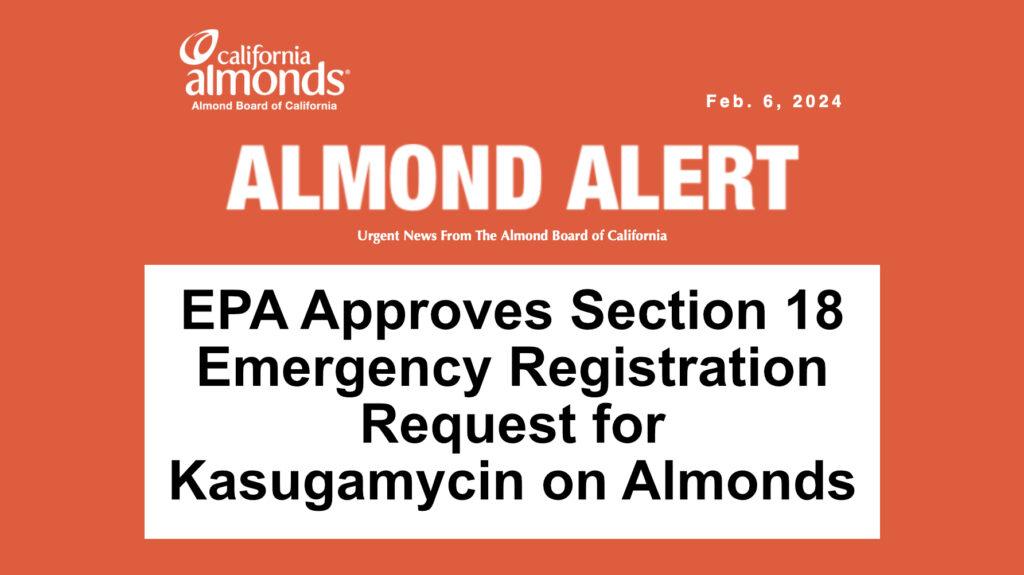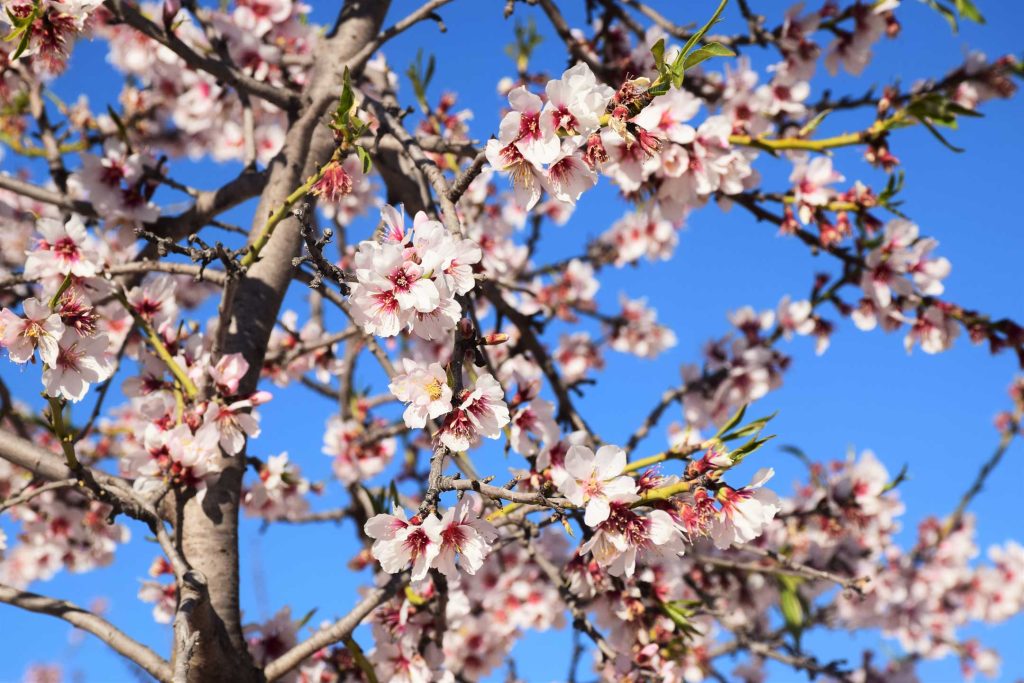EPA Approves Section 18 Emergency Registration Request for Kasugamycin on Almonds

The Environmental Protection Agency (EPA) and California Department of Pesticide Regulation recently accepted a Section 18 petition to allow the use of Kasumin 2L (kasugamycin) to control bacterial blast (Pseudomonas sp) in almonds. The registration allows up to two applications under anticipated cold or freezing conditions on almonds at a use rate of 64 fl. oz. per acre from February 2, 2024, through petal fall. Application after petal fall is prohibited. Kasugamycin may only be used during bloom.
The approval applies to the counties of Butte, Calaveras, Colusa, Contra Costa, Fresno, Glenn, Madera, Merced, Placer, San Joaquin, Stanislaus, Sutter, Tehama, Yolo, and Yuba.
Growers interested in this application are heavily encouraged to reference the Almond Board of California’s Honey Bee Best Management Practices as well as the Quick Guide for Applicators (in English & Spanish) to ensure pollinator health is maintained. As stated in these practices, growers should only use applications when absolutely necessary and should only make applications in the late afternoon or evening, when bees and pollen are not present.
Please contact your local County Ag Commissioner’s office for further details if interested in using this product.
Visit the California Department of Food and Agriculture website for a full list of County Ag Commissioners’ offices as well as contact information for each.
New DPR Updates for Soil Fumigant & Non-Soil Fumigant Licensees

Under the California Department of Pesticide Regulation’s (DPR) recently amended Certification and Training regulations, currently licensed individuals who want to continue to perform pest control using either soil fumigant or non-soil fumigant pesticides next year must obtain the appropriate new licensing category starting January 1, 2024.
The new Soil Fumigation (Category L) is required for individuals who perform pest control using a pesticide labeled as a fumigant to control soil pests in sites including fields, forests, golf courses, greenhouses, and individual tree or vine hole sites. Individuals who previously performed this type of pest control under the Field Fumigation (Subcategory O), which is no longer a subcategory after December 31, 2023, will have to obtain the new Category L if they wish to continue performing soil fumigations.
***Contact your local County Ag Commissioner to confirm that the county is exercising discretion.***
If you are looking for more information on this regulation package please visit –> https://www.cdpr.ca.gov/docs/license/cert_training.htm
